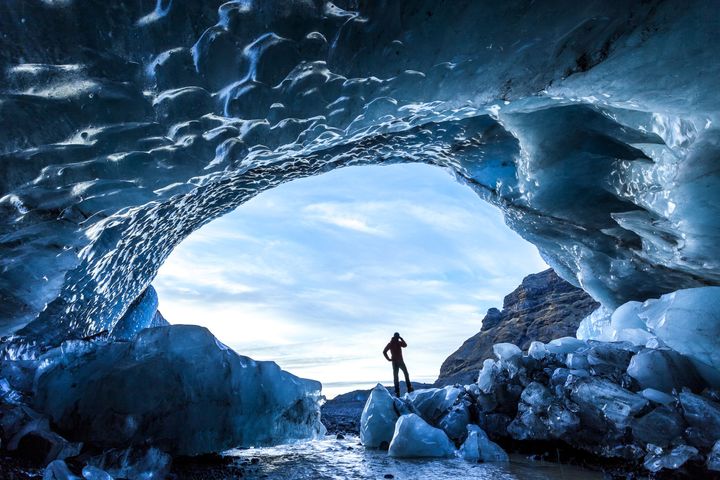
In the late 1970s, when the rise of satellite delivered cable services and new television channels focusing on everything from sports to news to movies, a 20-year-old history student named John Hendricks grappled with a question: Why wasn’t anyone making the TV channel he wanted ― that is, a channel that would play documentary films all day long?
“I loved documentaries since I was a kid,” Hendricks explained in an interview with The Huffington Post. In fact, when he was a student at the University of Alabama, one of his jobs was to acquire the 16mm films professors would use in their classes. “I was aware of all these great documentary films that were made by the BBC and other producers around the world. It added so much more to the teaching experience when the room darkened and the film played, and all of the sudden you were actually witnessing a volcano somewhere in the world in your geology class.”
After a few years of waiting for his dream channel, it became clear that if he wanted it, he would have to build it himself. In 1982, Hendricks incorporated the parent company of what was to become the Discovery channel, which launched on satellite on June 17, 1985.
Over the following 31 years of programming, the channel grew to become the fourth most widely distributed channel in the United States, reaching about 100,000,000 households. In recent years, it’s been the home to hits such as “Planet Earth,” “MythBusters” and “Deadliest Catch.” By mixing facts and storytelling, the shows sparked wonder and curiosity, all the sentiments that were close to Hendricks’ heart.
Now, having stepped down from the channel about two years ago, he’s taking his lifelong interests to new forms, launching CuriosityStream, a sort of a Netflix for documentary film, and hosting Curiosity Retreats, weeklong stays at a luxury mountain resort in Colorado (Gateway Canyons) where guests can experience intimate TED-like sessions with renowned scientists and thought leaders. (Tickets cost a minimum of $4,398.00.)
As Hendricks embarks on these new ventures, we reached out to the Discovery founder to talk about his 30-year career and what drives his insatiable curiosity.
One of the earliest taglines for Discovery Channel was “There’s no thrill like Discovery.” Why do you think that is?
Curiosity is a fundamental human trait. If you go back to thousands of years ago when we had to survive in the wilderness, there were people who were curious about how to make sharper tools, how to throw a spear farther. The fundamental driving force in human advancement is curiosity that wants us to try to figure out things and do them better and more efficiently. Most successful people have been propelled by curiosity.
But people have different degrees of curiosity. I’ve learned in my career that about 25 percent of people really do display a fundamental, insatiable curiosity all throughout their lives. I’ve watched the ratings over the years and this percentage seems consistent. CuriosityStream is tailor-made for that 25 percent of the population who carry around this cradle-to-grave curiosity about the world, about the current events and about how things work.
What are some of the projects you are working on?
I’m very intrigued with virtual reality (VR), which gives people a closer-to-reality experience. We are starting to film new productions in VR because that’s going to be the ultimate way that we could take you to a pyramid or the Himalayas or show you the wildlife migration in Africa. These productions will be shorter, about 20 minutes instead of an hour, because wearing the goggles for that long might not be pleasant.
Besides virtual reality, what will the future of science and nature documentary look like?
The special effects now have to be the state of the art because people now have come to expect a certain standard from science-fiction movies. If you have a science documentary about the exploration of other planets, for example, your animation better be first-rate.
But I think the biggest difference would be the length. As we are going into subscription video, on-demand and online streaming, you don’t have to develop programming in that one-hour format anymore. It can be as long or as short as the story requires. When we told a recent story on one of the space missions, it was only 17 minutes long. Science and nature documentaries don’t have to be cut to a broadcast clock any longer, and you can tell the story as concisely and compelling as possible.
What’s the value of good storytelling?
Good storytelling is not just for fiction. To have an impactful documentary it has to have a well-told story as well. In fact, storytelling is another fundamental human trait. A couple of years ago, I got to spend 10 days with one of the last hunter-gatherer tribes in Africa and I was just so amazed witnessing the storytelling around the campfire. It’s something that we like to do as humans; to passively listen to a story at the end of the day. Forty thousand years ago it was the elder around the campfire. Today, it’s TV.
Children are born curious. How can we nurture this early curiosity and keep it alive later on?
Pay attention to your daydreams. If you find yourself daydreaming about something, that’s a clue that you are really interested in that. And I always encourage people now to explore it further, even if its a quick internet search. And just keep exploring.
This exploration can take different forms at different times of the day. During the day we are kind of in a hunting-and-gathering mode, for news and information, so it’s probably not the best time to sit down at one in the afternoon to watch a movie. But something interesting happens after dinner. I think we humans, we are very receptive to storytelling particularly in the evening. We want to be immersed in stories, just the way we did at the campfire.
I also think that heavily structured school work kills curiosity and puts the lid on freewheeling curiosity. It’s important to find ways to keep it alive in children. Luckily, staying curious is rewarding. It leads you to gather knowledge, and you get some satisfaction when you understand the world a little better.

